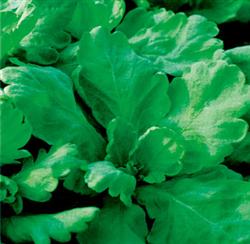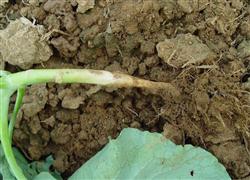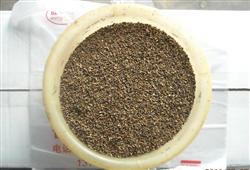Chrysanthemum planting: how to grow Artemisia annua?

How to grow Artemisia annua L.? Please introduce the method of Artemisia annua L. in spring, summer and autumn can be planted in the open field detailed methods can be referred to the following: 1, soil preparation, bed, fertilization. The growing period of Artemisia annua is short, so we should choose fertile and loose sandy loam. Every 667 square meters use 2500-4000 kg of high-quality farm manure, 50-100 kg of calcium superphosphate and 50 kg of ammonium bicarbonate. Turn the soil deeply so that the fertilizer and the soil are fully mixed. After raking flat, make the border, the width of the border is 1 to 1.5 meters. 2. Sowing seeds. Artemisia annua L. is mostly broadcast live. Strip sowing and sowing can be done. In order to promote seedling emergence, seed soaking and budding can be carried out before sowing. The method is to soak the seeds in warm water for 24 hours, remove and dry, germinate under the condition of 15: 20 ℃, and sow when the seeds are white. Sowing 3-4 kg per 667 square meters, in order to increase yield and improve quality, the amount of seed used can be increased to 5 kg. Strip sowing, in the border according to 15-20 cm row spacing trench, ditch depth 1 cm, thoroughly watered. The seed consumption is about 2 kg per 667 square meters. The soil cover is 1 cm thick after sowing. Plastic film should be covered against cold after sowing in early spring; sowing in early autumn should be increased because of high temperature and difficulty in emergence, shade and protection from high temperature and sun after sowing, and watering every day to keep the soil moist. Generally, all the seedlings can be produced 6-7 days after sowing. 3. Field management. ① seedlings and weeding. When the seedlings grow 1 or 2 true leaves, it should be time for the seedlings. The seedling distance of sowing is 4 cm square, and the plant spacing of strip sowing is 3 cm to 4 cm. Combine seedlings to get rid of weeds in the field. When raising and transplanting seedlings, it can be planted when the seedling age reaches about 30 days, and the suitable density is 16 cm × 10 cm. ② fertilizer and water management. In the case of direct seeding in the field, the second leaf of the seedling after the seedling can be watered for the first time. If the seedlings are transplanted, they should be sprayed with small water once or twice a day within 2-3 days after planting, and then irrigated once every morning or evening until the seedlings are slow down. Chrysanthemum chrysanthemum in the growing period can not lack of water, should keep the soil in a moist state, but the field can not accumulate water. When sowing in early spring, moisture should be properly controlled after the seedlings are unearthed to prevent the occurrence of quenching disease. When the plant grows to 10-12 cm, start the first topdressing, 10-20 kg of urea every 667 square meters, and then irrigate immediately after topdressing. 4. Harvest. The harvest of Artemisia annua L. is divided into one-time harvest and staging harvest. One-time harvest is 40-50 days after sowing, the seedling height is about 20 cm, close to the ground to harvest. There are two methods of harvesting by stages, one is to harvest sparsely, the other is to keep 1 or 2 side branches, watering and fertilizing once after each harvest, and can be harvested again every 20 to 30 days. It produces 1000 to 1500 kilograms per 667 square meters. 5. Storage of Artemisia annua L. The optimum storage temperature is 0 ℃, which can be stored for 10 to 14 days. At room temperature, the leaves wilt after 1 day of storage. The best relative humidity is 98%-100%, but there can be no condensed water gathered on the leaves, otherwise it is perishable, and it is very important to precool immediately after harvest. Click to get more chrysanthemum planting techniques click to get more vegetable planting techniques
- Prev

Broccoli cultivation techniques: what is broccoli blight?
What is broccoli blight? Please give an introduction and control methods broccoli blight symptoms broccoli blight also known as black root disease, broccoli is an important seedling disease. At the beginning of the disease, the rootstock of the seedlings turned black or constricted, and when wet, it gave birth to gray mold. After the plant was infected, the leaves wilted and dried up within a few days.
- Next

What should I pay attention to in summer?
What should I pay attention to in summer? Please give guidance on the short growth period of summer chrysanthemum, from sowing to harvest only more than 20 days. However, the growth period is in the high temperature period, and it is easy to cause diseases if the management is not paid attention to. The following is an introduction to the management of summer chrysanthemum for reference: First, sowing. Sowing can be machine seeded,...
Related
- Where is it suitable to grow horseradish in China? it is expected to see the middle altitude horseradish in Alishan.
- How to prevent tomato virus disease reasonably? (Control methods included)
- Many people like to plant towel gourd on the balcony. What are the main points of this method and management?
- What crops can chili peppers be mixed with?
- Fertilization techniques and matters needing attention in Tomato
- What are the grafting techniques for peach seedlings in spring?
- Harm and control methods of root swelling disease of Chinese cabbage
- What are the pests of sweet potatoes? How to prevent and cure it?
- Symptoms, causes and Control methods of navel Rot in Tomato
- The cause of "Cucumber rotten bibcock" in Farmers' planting Cucumber and its Control Plan

